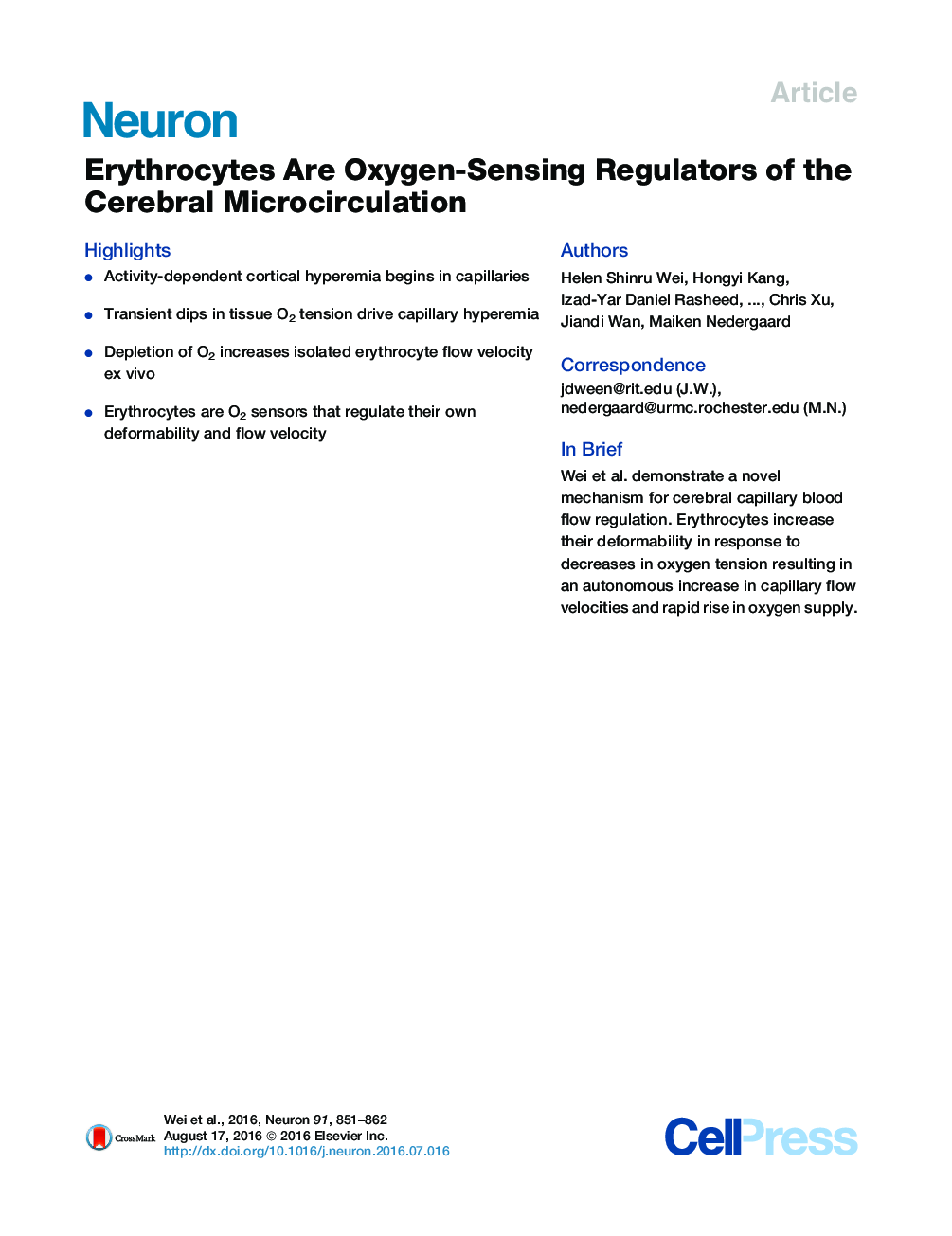| Article ID | Journal | Published Year | Pages | File Type |
|---|---|---|---|---|
| 4320663 | Neuron | 2016 | 12 Pages |
•Activity-dependent cortical hyperemia begins in capillaries•Transient dips in tissue O2 tension drive capillary hyperemia•Depletion of O2 increases isolated erythrocyte flow velocity ex vivo•Erythrocytes are O2 sensors that regulate their own deformability and flow velocity
SummaryEnergy production in the brain depends almost exclusively on oxidative metabolism. Neurons have small energy reserves and require a continuous supply of oxygen (O2). It is therefore not surprising that one of the hallmarks of normal brain function is the tight coupling between cerebral blood flow and neuronal activity. Since capillaries are embedded in the O2-consuming neuropil, we have here examined whether activity-dependent dips in O2 tension drive capillary hyperemia. In vivo analyses showed that transient dips in tissue O2 tension elicit capillary hyperemia. Ex vivo experiments revealed that red blood cells (RBCs) themselves act as O2 sensors that autonomously regulate their own deformability and thereby flow velocity through capillaries in response to physiological decreases in O2 tension. This observation has broad implications for understanding how local changes in blood flow are coupled to synaptic transmission.
